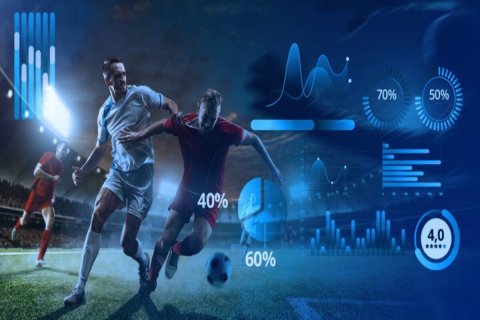In the modern era, technology is transforming soccer faster than ever, creating tools that enhance performance, prevent injuries, and ensure fairness on the field. From AI-driven offside detection systems to data analytics predicting injuries, soccer is entering a new phase of precision, intelligence, and efficiency.
The New Era of Game Analysis
Soccer has always been a sport of strategy, intuition, and emotion. However, the introduction of technological innovations is changing how teams and coaches interpret the game. Traditional methods of match analysis relied heavily on manual observation and subjective interpretation. Today, artificial intelligence and computer vision are taking over, offering an objective and data-rich understanding of every move on the pitch.
These systems can track players’ movements, ball trajectories, and even the timing and impact of passes and shots. Using high-speed cameras and deep learning algorithms, analysts can visualize game patterns that were once invisible. For example, technologies like tracking sensors and real-time video analysis provide instant feedback to coaching staff, allowing immediate tactical adjustments during or after a match.
The beauty of this shift lies in the precision. Coaches no longer have to guess who covered more ground or which formation was most effective—they can see it clearly in numbers and heat maps. The fusion of AI and analytics is redefining how soccer intelligence is measured, turning the beautiful game into a science of movement and decision-making.
Offside Detection: From Multiple Cameras to One
One of the most exciting breakthroughs in recent years is automated offside detection using a single camera. Traditionally, systems like VAR (Video Assistant Referee) rely on multiple synchronized cameras to detect offside positions. These systems are expensive and complex, often requiring extensive infrastructure and human supervision.
The new generation of offside detection uses computer vision models that can process footage from a single camera and determine the position of each player relative to the ball and goal line with remarkable accuracy. Through the use of AI algorithms and player pose estimation, these systems can recreate a 3D interpretation of the scene using only 2D input.

This innovation could revolutionize lower-league and youth soccer, where multi-camera VAR setups are impractical. By reducing the cost and complexity, it democratizes access to fair and accurate officiating. The system can instantly alert referees through a digital interface, ensuring faster, more objective decisions without halting the rhythm of the game.
Furthermore, developers are continuously refining these systems to handle challenges such as player overlap, shadows, or irregular camera angles. The potential impact is enormous: a portable, affordable, and highly reliable offside detection system that maintains the integrity of the sport at every level.
Predicting and Preventing Injuries through Data
Another frontier transforming modern soccer is injury prediction and prevention. Every year, clubs lose millions due to player injuries that could often be anticipated through better monitoring. Thanks to machine learning and biomechanical analysis, this is no longer a distant dream.
Wearable devices and smart clothing now collect real-time data on player workload, heart rate, muscle fatigue, acceleration, and even sleep quality. When this data is fed into predictive algorithms, it identifies patterns that precede injuries—such as overexertion, muscular imbalance, or fatigue accumulation.
For instance, an algorithm might detect that a player’s sprint speed is dropping faster than usual during training, signaling potential hamstring strain risk. Coaches can then modify training intensity or recovery routines, preventing injury before it occurs. These systems are not only about saving time and money but about protecting the most valuable asset of any team—its players.
Elite clubs like Manchester City and Bayern Munich have already adopted AI-driven performance tracking platforms to minimize injuries and optimize workload management. The next step involves making these tools accessible for academies and semi-professional teams, creating a future where data-driven health management becomes standard across all levels of soccer.
Integrating AI into Tactical and Technical Training
Beyond refereeing and health monitoring, artificial intelligence is now part of daily training routines. Video analysis software can dissect an entire match or training session, isolating every individual’s contribution. Coaches can access visual reports highlighting passing accuracy, defensive positioning, and even decision-making under pressure.
Players also benefit directly from this technology. With the help of AI-guided feedback systems, athletes can review personalized training sessions showing their strengths and weaknesses. This type of individualized analysis supports player growth at a much faster rate than traditional feedback.
Moreover, virtual and augmented reality tools are entering the training space, allowing players to simulate match scenarios and enhance spatial awareness without physical exertion. These systems enable players to replay tactical situations in an immersive environment, improving cognitive skills such as anticipation, perception, and reaction time.
Ethical and Human Considerations
While technology brings undeniable advantages, it also introduces ethical and human challenges. The reliance on AI systems raises questions about data privacy, decision transparency, and emotional connection. Soccer remains a sport deeply rooted in human spirit, and excessive automation risks diluting its passion.

Therefore, the real challenge for the soccer world is to find balance—to use technology as a tool, not a replacement. The aim should be to empower players and coaches, not to overshadow them. Maintaining human judgment alongside data interpretation ensures that the game’s soul remains intact while benefitting from modern precision.
The Future: Smarter, Safer, and Fairer Soccer
The road ahead points toward even greater integration between technology and human performance. The next decade could see fully automated analytics systems capable of detecting patterns in play before coaches even notice them, or biometric sensors that adapt training in real time to optimize performance.
Imagine a world where every soccer field, from youth academies to professional stadiums, has access to affordable analytical systems capable of tracking player evolution, managing health risks, and guiding tactical strategy. This isn’t science fiction—it’s the emerging reality of global soccer.
Connection to SIA Academy
At SIA Academy, we are fully aligned with this technological evolution in soccer. Our programs integrate data-driven training analysis, injury prevention technologies, and AI-assisted feedback to help players understand and improve their performance. Just as the professional world adopts single-camera analysis and predictive models, we embrace similar tools to personalize player development and make training smarter and safer.
By combining expert coaching with innovative technology, SIA Academy ensures that our players are prepared for the future of soccer, where knowledge, performance, and technology converge. The use of advanced tracking systems, performance analytics, and health monitoring allows us to build athletes who are not only technically skilled but intelligently developed and physically protected—a perfect balance between human passion and technological precision.






